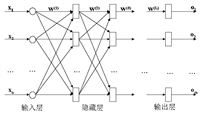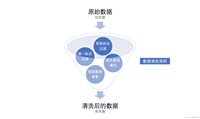前言
if-else语句是控制流程的基本工具,但过度使用会使代码变得复杂且难以维护。在springboot , springcloud项目中,优化if-else结构变得尤为重要。本文将深入探讨七种策略,旨在减少springboot , springcloud项目中 if-else的使用,提升代码的模块化、可读性和可维护性。
一. 策略模式
策略模式允许在运行时选择算法的行为。它通过将算法定义成独立的类,并在运行时动态选择使用哪个算法,来避免使用多个if-else或switch语句。
实战案例:支付功能
假设我们有一个支付系统,支持微信、支付宝和银联等多种支付方式。我们可以定义一个支付策略接口,并为每种支付方式实现具体的策略类。
public interface paymentstrategy {
void pay(double amount);
}
// 微信支付
@component
public class weixinpayment implements paymentstrategy {
public void pay(double amount) {
// 实现微信支付逻辑
}
}
// 其他支付方式的实现...
@service
public class paymentservice {
private final map<string, paymentstrategy> strategies;
@autowired
public paymentservice(list<paymentstrategy> paymentstrategies) {
this.strategies = paymentstrategies.stream()
.collect(collectors.tomap(s -> s.getclass().getsimplename().tolowercase(), function.identity()));
}
public void processpayment(string strategyname, double amount) {
paymentstrategy strategy = strategies.getordefault(strategyname, null);
if (strategy != null) {
strategy.pay(amount);
} else {
throw new illegalargumentexception("unsupported payment strategy: " + strategyname);
}
}
}
二. 枚举与策略模式结合
枚举类型不仅可以用来表示一组常量,还可以定义与这些常量相关联的行为。结合策略模式,可以进一步简化代码。
实战案例:订单状态管理
public enum orderstatus {
new {
@override
public void process() {
// 处理新建订单
}
},
// 已支付
paid {
@override
public void process() {
// todo
}
};
// 其他状态...
;
public abstract void process();
}
@service
public class orderservice {
public void handleorder(orderstatus status) {
status.process();
}
}
三. 多态性
利用多态性,可以基于接口或抽象类定义一系列行为,并在运行时根据具体对象调用相应的方法。
实战案例:消息通知
public interface notification {
void send(string message);
}
@component
public class emailnotification implements notification {
// 实现发送邮件的逻辑
}
@component
public class smsnotification implements notification {
// 实现发送邮件的逻辑
}
// 其他通知方式的实现...
@service
public class notificationservice {
@autowired
private list<notification> notifications;
public void notifyall(string message) {
notifications.foreach(notification -> notification.send(message));
}
}
通过spring依赖注入,自动完成当前所有实现了notification接口的bean
四. lambda表达式与函数接口
java 8引入的lambda表达式和函数接口(如function、consumer等)为简化代码提供了强大工具。
实战案例:折扣计算
@service
public class discountservice {
private final map<string, function<double, double>> discountfunctions = new hashmap<>();
public discountservice() {
discountfunctions.put("vip1", price -> price * 0.95);
discountfunctions.put("vip2", price -> price * 0.95 - 20 );
// 其他vip等级的折扣设置...
}
public double applydiscount(string discountcode, double price) {
return discountfunctions.getordefault(discountcode, function.identity()).apply(price);
}
}
五. 状态模式
状态模式主要用来解决当一个对象的行为取决于它的状态时,并且需要在运行时根据状态改变它的行为的问题。
状态模式的结构
context(环境类):维护一个具体状态类的实例,这个实例的当前状态决定了环境类的行为。
state(抽象状态类):用以封装与context的一个特定状态相关的行为。
concretestate(具体状态类):实现state接口,每一个具体状态类封装了与context的一个状态相关的行为。
有一个订单系统,订单的状态包括未支付、已支付、已发货和已完成。我们可以使用状态模式来管理订单的状态和行为。
5.1. 定义抽象状态类(state)
public interface orderstate {
void pay(ordercontext ordercontext);
void ship(ordercontext ordercontext);
void complete(ordercontext ordercontext);
}
接收ordercontext类型的参数,以便在需要时可以访问订单的其他属性或修改订单的状态。
5.2. 定义具体状态类(concretestate)
public class unpaidstate implements orderstate {
private ordercontext context;
public unpaidstate(ordercontext context) {
this.context = context;
}
@override
public void pay(ordercontext ordercontext) {
// 更新订单状态为已支付
ordercontext.setstate(new paidstate(ordercontext));
// 执行支付逻辑
system.out.println("order paid successfully");
}
@override
public void ship(ordercontext ordercontext) {
throw new illegalstateexception("cannot ship an unpaid order");
}
@override
public void complete(ordercontext ordercontext) {
throw new illegalstateexception("cannot complete an unpaid order");
}
}
// 你可以定义 paidstate, shippedstate, completedstate 等类
5.3. 定义环境类(context)
环境类维护了当前状态对象的引用,并定义了委托给当前状态对象的请求方法。
public class ordercontext {
private orderstate state;
public ordercontext(orderstate state) {
this.state = state;
}
public void setstate(orderstate state) {
this.state = state;
}
public void pay() {
state.pay(this);
}
public void ship() {
state.ship(this);
}
public void complete() {
state.complete(this);
}
// 其他订单属性和方法...
}
5.4. 客户端代码
最后,客户端代码通过环境类与订单交互,环境类根据当前状态决定执行什么行为。订单交互,环境类根据当前状态决定执行什么行为。
public class client {
public static void main(string[] args) {
ordercontext order = new ordercontext(new unpaidstate(order));
// 尝试支付订单
order.pay();
// 尝试发货(根据订单状态,这可能会抛出异常)
// order.ship();
// 假设订单支付后,订单状态已更新为 paidstate
// order.setstate(new paidstate(order));
// order.ship();
}
}
5.5 状态模式的优点
封装了转换逻辑:状态模式将状态的转换逻辑封装在状态类中,减少了
if-else或switch-case语句,使得代码更加清晰和易于维护。或switch-case语句,使得代码更加清晰和易于维护。易于扩展:如果需要添加新的状态或行为,只需添加新的状态类即可,无需修改其他类。
状态转换与行为委托:通过将行为委托给当前状态对象,环境类(如订单)可以在不修改自身代码的情况下
六. 命令模式
命令模式将请求封装为对象,从而允许使用不同的请求、队列、日志来参数化其他对象。它特别适用于需要撤销或重做操作的场景。
七. 保护子句
保护子句(也称为卫语句)通过提前检查条件并抛出异常或返回错误,来避免深层嵌套的if-else结构。
总结
通过策略模式、枚举与策略模式结合、状态模式, 多态性、lambda表达式与函数接口、命令模式以及保护子句等策略,我们可以有效地减少springboot,springcloud 项目中if-else语句的使用,提升代码的可读性、可维护性和模块化水平。每种策略都有其适用的场景,合理选择和组合这些策略,可以帮助我们编写出更简洁、更高效的代码。
以上就是springboot中优化if-else语句的七种方法的详细内容,更多关于springboot优化if-else语句的资料请关注代码网其它相关文章!





发表评论